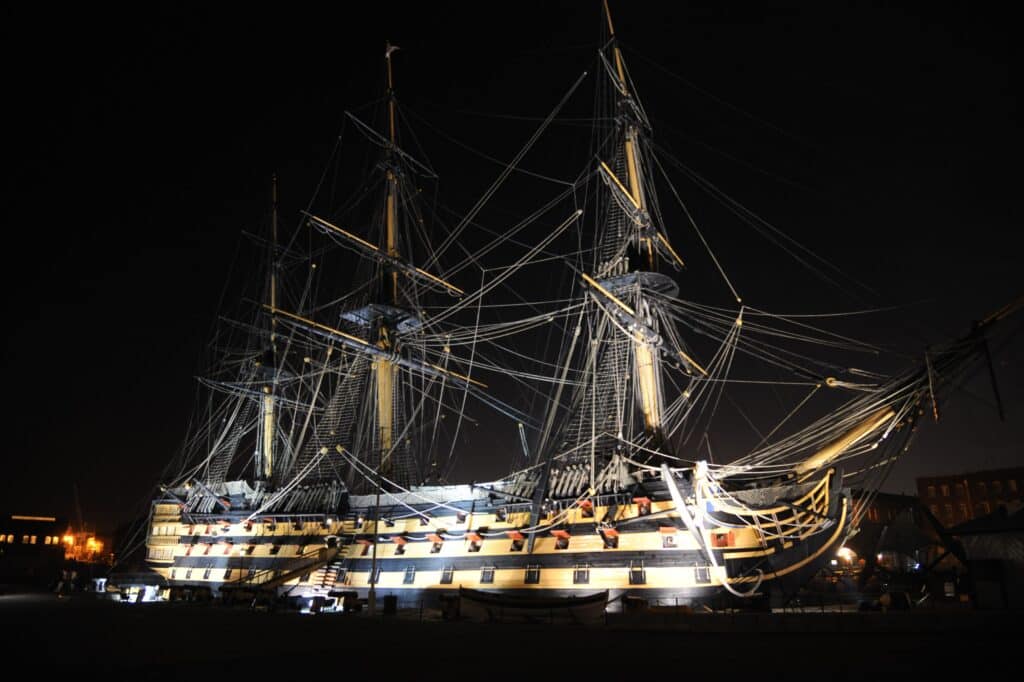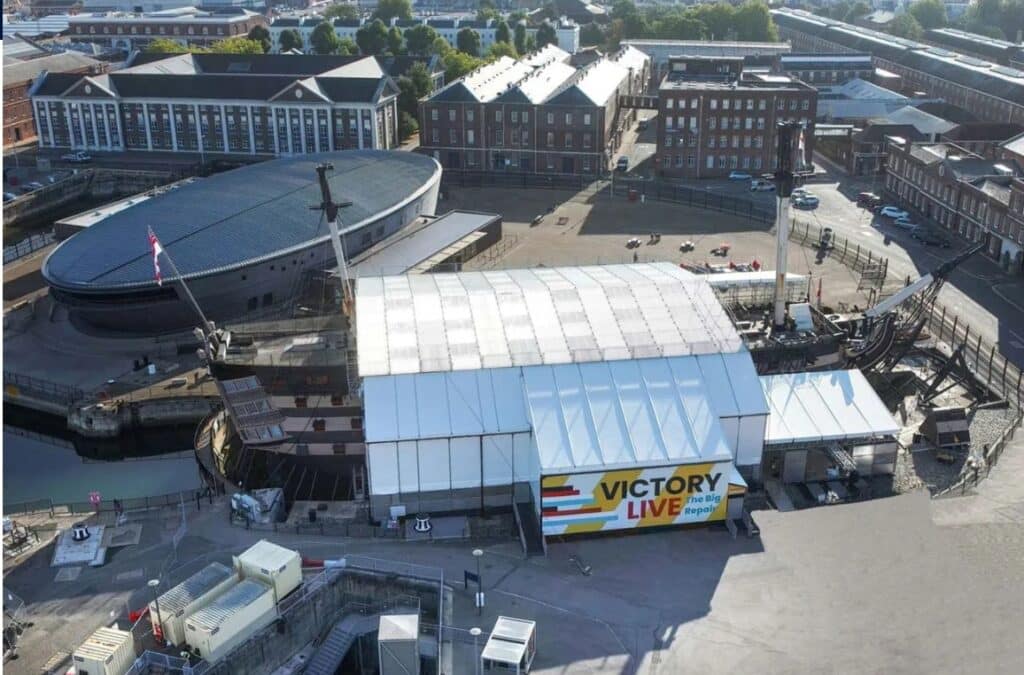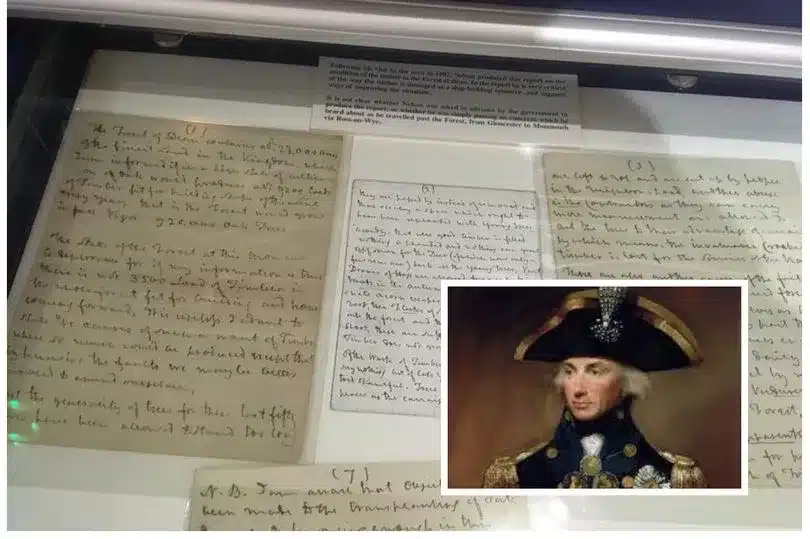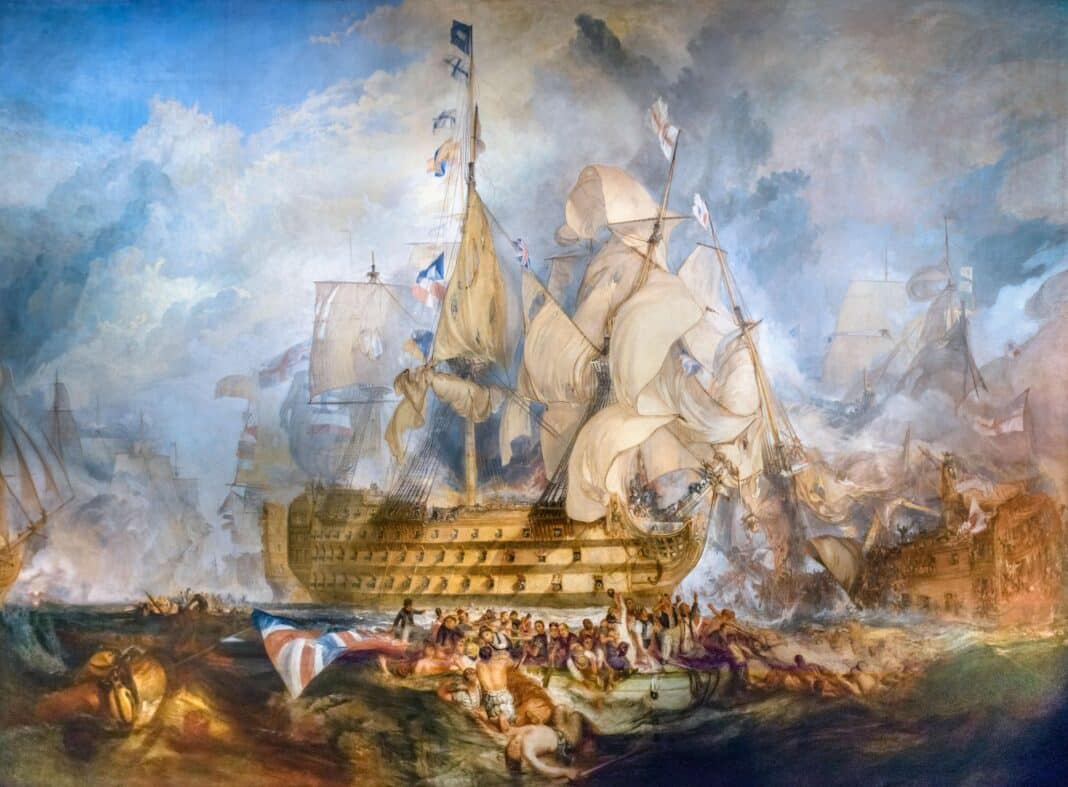HMS Victory, Lord Nelson’s flagship – responsible for leading The Royal Navy victory over Napolean at Trafalgar, will be rebuilt plank by plank – using wood sourced from…France!
That is according to the Daily Mail, which revealed that more than two centuries after the historic 1805 battle—where sailors were told “England expects that every man will do his duty”—shipbuilders have turned to Britain’s oldest foe to source the oak because “they have the best forests.”
Simon Williams, the project manager overseeing the restoration, said even Nelson himself was “very concerned” about the “state” of British forests. The £45 million restoration project will see Hewins Oak, WL West & Sons, and Border Harwoods provide the National Museum of The Royal Navy with timbers—potentially from PEFC-certified French forests.
“In the current age, France is a neighbour that we have a reasonably good relationship with, and they certainly have superiorly managed forests to the UK,” according to Mr Williams, who added that next week marks the 219th anniversary of arguably Great Britain’s most famous Victory.
The decision to source French oak to patch up HMS Victory stemmed from the French decision in the 17th century to dedicate “large areas” of green to shipbuilding:
“Even when Victory made her name, Napoleon instructed even more planting of trees. The French have been very, very good at managing useable forest since the 1600’s.”
Simon Williams – Project Manager for the National Museum of the Royal Navy
Why The Royal Navy ‘nicked trees’ for centuries
It is not the first time the Navy has snubbed English oaks. The Royal Navy previously sourced timbers from Canada to help restore its fleet:
“For the Royal Navy to support ships like Victory and their construction and maintenance, we have always looked abroad to bolster supply. It’s ironic that we must go to the French for this oak – but it isn’t unusual. The French have very well-managed oak forests, and the scale means we can be very discerning on quality.”
Mr Williams on why The Royal Navy has looked abroad when restoring old vessels.
According to Dan Snow, a maritime historian, the decision to use French oaks was “not completely shocking” as The Royal Navy had historically “nicked its trees from overseas.”
‘It’s kind of a nice bit of history,” Mr Snow said, adding that the current ship had become so weathered – more than 40 years after the last restoration – forcing The Royal Navy to look overseas for suitable oaks. “They had to strip a lot of what was done in the 80s because it got wet, cold, hot, and so the trees were exposed to the weather – the west-facing side got the rain. And it’s very hard to source the right type of oak here in the UK, so it’s coming from the French.”

The Royal Navy began work on the full restoration in May 2022
According to the Royal Navy, the latest round of conservation work began more than two years ago when scaffolding was erected around the ship to allow her to dry out—Victory is now drier than at any time in her history—and work to be carried out in all weathers.
The restoration of the hull focuses on replacing decayed planks and damaged frames. In October 2023, Andrew Baines, then-project director, said:
“Although a cursory look at Victory in early 2022 might have given the impression that the ship was in good condition, in reality, a thin skin of paint and filler masked planking that was entirely rotten on the ship’s starboard side. When the outer sound layer was removed, the shipwrights were confronted with material that no longer resembled timber and was much closer to potting compost.”

The conservation of the historic ship is hoped to be finalised in 2035 – with The Royal Navy hopeful the repairs will extend the ship’s life by another 50 years.
Lord Nelson had deep concerns about the state of British Forests.
‘Historically, Nelson was very concerned about the state of British woodlands,’ said Mr Williams, adding: “After a visit to the Forest of Dean, he was concerned that they were not managed as they should be.”
“When Victory was afloat, even then – there was serious concern about British forests,” he said, with the 1765 commissioned warship taken out of the water every few years to “service a total refit” on the famous vessel – constructed entirely from English oak and other British trees.

A handwritten report by the Admiral at The Nelson Museum branded the state of the Forest of Dean, Gloucestershire, as ‘deplorable.’ Among complaints, Nelson said they allowed some trees to “stand too long,” occupying a space that “ought to have been replanted with young trees.”
More about HMS Victory
HMS Victory was built in 1759 and launched in 1765, making it the world’s oldest commissioned warship. Approximately 6,000 trees were used in her construction. To rig the ship, 26 miles of rope and 768 pulley blocks were needed. Since 1765, the ship has undergone five major repairs and was almost completely rebuilt by the Battle of Trafalgar in 1805.
Fought on October 21, 1805, the Battle of Trafalgar is one of history’s most epic sea clashes. Not only did it see Britain eliminate the most severe threat to its security in 200 years, but it also saw the death of one of its most famous heroes—Admiral Lord Nelson. This was not before his high-risk but acutely brave strategy won arguably the most decisive victory in the Napoleonic wars. Nelson’s triumph gave Britain control of the seas and laid the foundation for Britain’s global power for more than a century.
- To learn more about HMS Victory, visit The Royal Navy website.






